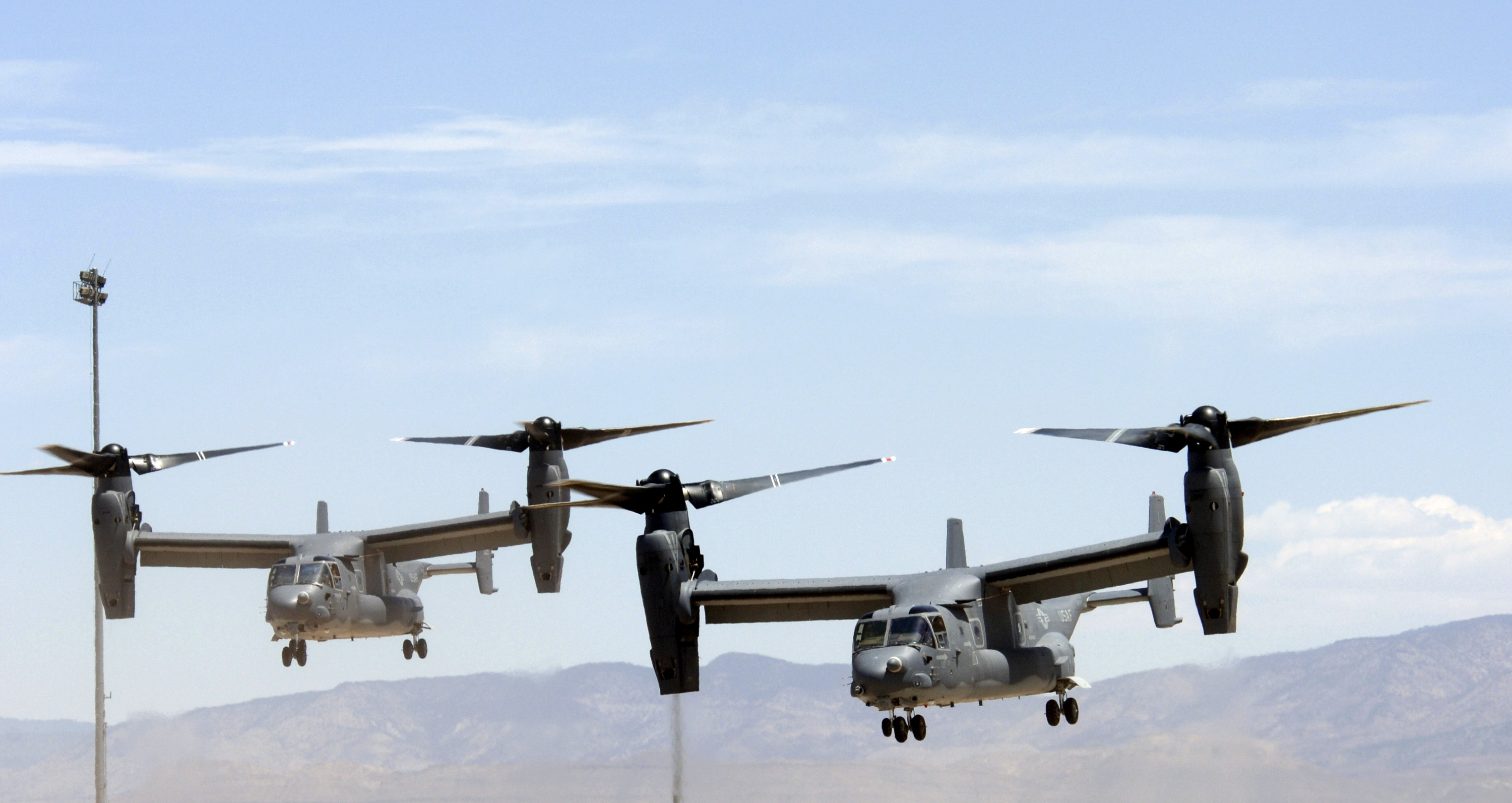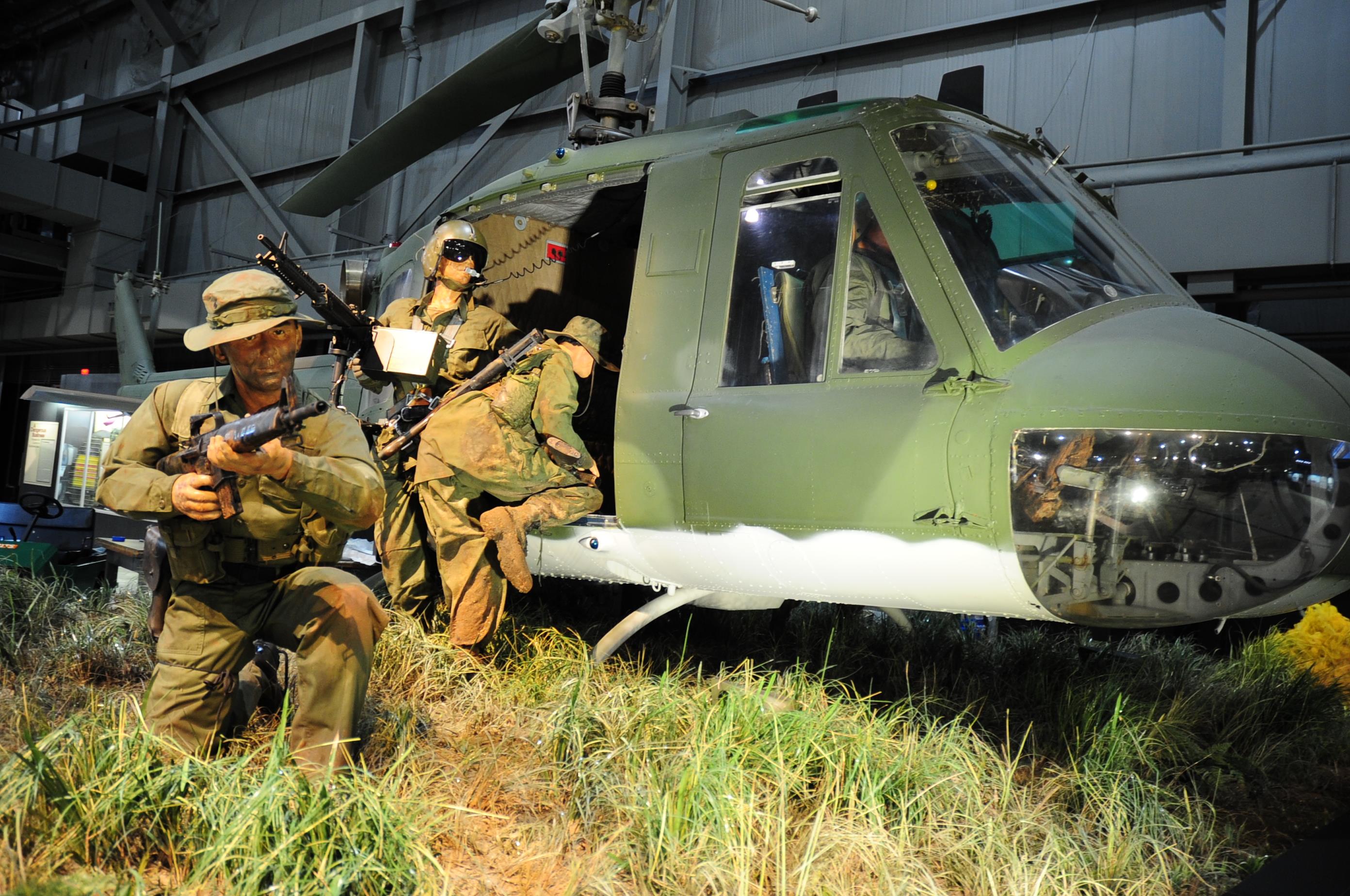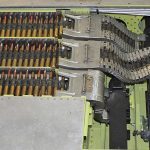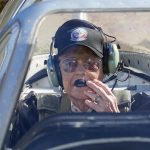
PRESS RELEASE- As part of a salute to the heritage of the 20th Special Operations Squadron (SOS), two CV-22 Osprey aircraft will land on the front lawn at the National Museum of the U.S. Air Force on Sept. 15, at 9:30 a.m., and be on display for the public until their departure at 4 p.m. (Note: Inclement weather conditions may alter the operation. Check the museum’s website and social media sites for the latest information.) The aircraft will be flown to the museum by current members of the 20th SOS at Cannon Air Force Base, New Mexico, and will be greeted by veterans of the 20th SOS who supported secret missions in South Vietnam, Laos, and Cambodia during the Southeast Asia War. Flying Bell UH-1F/P “Huey” helicopters from Nha Trang Air Base, Republic of Vietnam, under the call sign “Green Hornets,” the 20th SOS also inserted Special Forces reconnaissance teams inside enemy-held territory.
Members of the Green Hornets and 20th SOS will also gather at 2 p.m. near the museum’s Southeast Asia War Gallery to formally dedicate the recently completed UH-1 exhibit and diorama. The diorama depicts a daring rescue scene that took place in Vietnam on Nov. 26, 1968. Helicopters from the 20th Special Operations Squadron Green Hornets had inserted Special Forces reconnaissance team “Chisel” near Duc Co, South Vietnam. This six-man Special Forces team almost immediately encountered a much larger enemy force and retreated to a nearby riverbank. While the communists fired at them from three sides and prepared to overrun their position, the reconnaissance team radioed for an emergency extraction.
The Green Hornets heard the call and returned to extract the threatened Special Forces. Despite heavy enemy gunfire, Lt. James P. Fleming flew his UH-1F in close to rescue the Special Forces team. Meanwhile, Maj. Leonard Gonzales provided covering fire with his gunship. With no safe landing spot, intense enemy gunfire forced Fleming to back away, but he made a second attempt. While Fleming kept his helicopter hovering just above the river and nudged up to the riverbank, the door gunners kept the enemy at bay. This effort gave the “Chisel” team time to sprint toward the waiting helicopter. Door gunner SSgt. Fred Cook remembered the incoming gunfire as being “so thick you could walk on it.” Returning fire with his M60 machine gun in one hand, Cook pulled the “Chisel” team aboard with his other.
Escaping low over the river in a hail of gunfire, the helicopter received numerous bullet holes, but amazingly, nobody was hurt. For his efforts, Fleming received the Congressional Medal of Honor. The two door gunners, SSgt. Cook and Sgt. Paul Johnson, received the Distinguished Flying Cross. Fleming’s copilot, Maj. Paul McClellan received the Silver Star. Maj. Gonzales received the Air Force Cross. The other participating Green Hornets received eleven Distinguished Flying Crosses, one Silver Star, and two Air Medals. In recent years, many have begun to learn more about the heroic actions of the Green Hornets. However, according to National Museum of the U.S. Air Force Historian Dr. Jeff Underwood, for many years, very little was widely known about them. “Because the Green Hornets performed dangerous missions under great secrecy, the American people have known little about their important role in Vietnam,” said Underwood. “With that veil of secrecy now lifted, the museum hopes this new diorama about Lt. Fleming and the Green Hornets helps inform the world of their accomplishments.”
Following the exhibit dedication, the 20th SOS and Green Hornets will continue their reunion in Kokomo, IN. The two CV-22 Osprey aircraft will depart museum grounds around 4 p.m. and make a short flight to the main airfield at Wright-Patterson AFB. Then on Sept. 17, these two CV-22 aircraft will perform a fly-over during the U.S. Air Force Marathon Opening Ceremonies, before returning to Cannon Air Force Base, New Mexico.
The National Museum of the U.S. Air Force, located at Wright-Patterson Air Force® Base near Dayton, Ohio, is the world’s largest military aviation museum. With free admission and parking, the museum features more than 360 aerospace vehicles and missiles and thousands of artifacts amid more than 19 acres of indoor exhibit space. Each year about one million visitors from around the world come to the museum. For more information, visit www.nationalmuseum.af.mil.
























